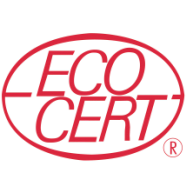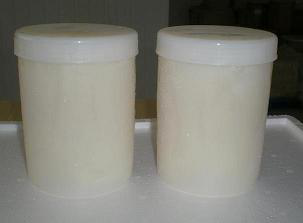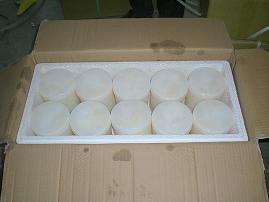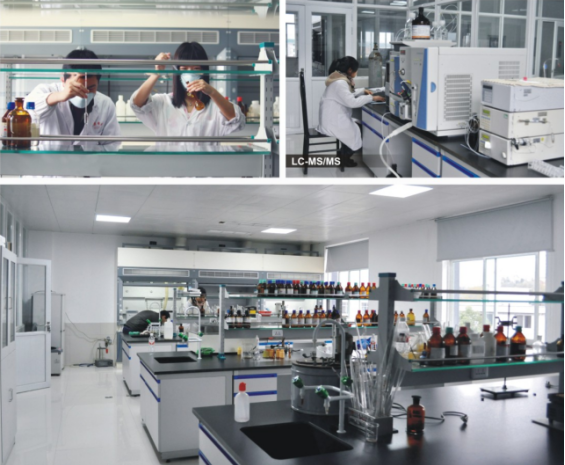Cheapest Price Organic Fresh royal jelly Wholesale to European
Cheapest Price Organic Fresh royal jelly Wholesale to European Detail:
[Products Name] Fresh royal jelly, organic fresh royal jelly
[Specification] 10-HDA 1.4%, 1.6%, 1.8%, 2.0% HPLC
[Gerneral feature]
1. Low antibiotics, Chloramphenicol< 0.1ppb
2.Organic certified by ECOCERT, according to EOS & NOP organic standard;
3.100% pure natural frozen fresh royal jelly
4.Can be easily produced into soft capsules.
[Our advantages]
- 600 bee farmers, 150 units of bee-feeding groups located in natural mountains;
- Organic certificated by ECOCERT;
- NON-antibiotics, widely exported to Europe;
- Health Certificate, Sanitary Certificate and Quality Certificate are available.
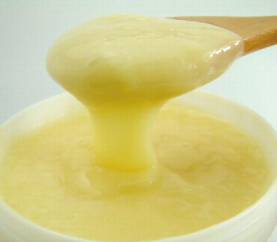
[Packing]
1kg in plastic jar, with 10 jars per carton.
5kg in a aluminum foil bag, 10kgs per carton.
Also we can pack as customer’s requirement.
[Transportation]
If quantity ordered is low we can transport by air,
If above 4,000kg, by sea, one 20 foot refrigerated container.
[Storage]

[What is royal jelly]
Fresh royal jelly is the concentrated super food responsible for turning an ordinary worker bee into a queen bee. The queen bee is 50% larger than a worker bee and lives for up to 4 to 5 years with worker bees living through only one season.
Fresh royal jelly, along with bee pollen, propolis and honey, contains a natural source of nutrients, which the body needs to maintain good health. Athletes and other people report increased stamina and general well being, after two weeks supplementing their diets.
Main indices of physical and chemic in fresh royal jelly
|
Ingredients Indices |
Fresh royal jelly |
Standards |
Results |
|
Ash |
1.018 |
<1.5 |
Complies |
|
Water |
65.00% |
<69% |
Complies |
|
Glucose |
11.79% |
<15% |
Complies |
|
Water-solubility protein |
4.65% |
<11% |
Complies |
|
10-HDA |
1.95% |
>1.4% |
Complies |
|
Acidity |
32.1 |
30-53 |
Complies |
[Quality control]
Traceability record
GMP standard production
Advanced inspection equipment
[Benefits]
The benefits of Royal Jelly and other hive products are no longer treated as folk medicines. Royal jelly has been found to be helpful in the following areas:
1) Tones and strengthens skin
2) Relieves weak and tired eyes
3) Combats the aging process
4) Improves memory
5) Aiding restful sleep
6) Helps against impotence in men and infertility in women
7) It is an antibacterial and may help to prevent leukemia
8) Has a yeast-inhibiting function, preventing conditions such as
thrush and athlete’s foot
9) Contains the male testosterone, which may increase libido
10) Can help treat muscular dystrophy
11) Improves resistance to allergies
12) Controls cholesterol levels
13) Boosts the body’s resistance to the harmful side effects of
chemotherapy and radiotherapy
14) Helps treat skin problems, including eczema, psoriasis and acne
15) Combined with Pantothenic acid, royal jelly provides relief from
the symptoms of arthritis.
Product detail pictures:

Related Product Guide:
Our goods are commonly recognized and reliable by consumers and may satisfy continually developing economic and social needs for Cheapest Price Organic Fresh royal jelly Wholesale to European , The product will supply to all over the world, such as: Turkey, Qatar, Chile, With its rich manufacturing experience, high-quality products, and perfect after-sale service, the company has gained good reputation and has become one of the famous enterprise specialized in manufacturing series.We sincerely hope to establish business relation with you and pursue mutual benefit.
A 78 yr old man suffering in SEVERE pain with polymyalgia rheumatica says OPC3 is the miracle that relieved his pain……something that all his medications could not do for him.
Components of the gastrointestinal tract (GI tract) and digestive enzymes. This video and other related animations and images are available for instant download licensing here: https://www.alilamedicalmedia.com/-/galleries/images-videos-by-medical-specialties/gastroenterology-digestive-diseases
Voice by: Sue Stern
©Alila Medical Media. All rights reserved.
The digestive system is composed of 2 main components: the gastrointestinal tract, or GI tract, where digestion and absorption take place; and accessory organs which secrete various fluids/enzymes to help with digestion. The GI tract is a continuous chain of organs where food enters at one end and waste gets out from the other. These organs are lined with smooth muscles whose rhythmic contractions generate waves of movement along their walls, known as peristalsis. Peristalsis is the force that propels food down the tract.
Digestion is the process of breaking down food into smaller, simpler components, so they can be absorbed by the body. Basically, carbohydrates such as sugars and starch are broken down into glucose, proteins into amino acids, and fat molecules into fatty acids and glycerol.
Digestion starts in the oral cavity where the food is moistened with saliva and chewed, food bolus is formed to facilitate swallowing. Saliva is secreted by the salivary glands and contains the enzyme amylase. Amylase breaks down starch into maltose and dextrin which are processed further in the small intestine.
The food bolus is propelled down the esophagus into the stomach, the major organ of the GI tract. The stomach produces gastric juice containing pepsin, a protease, and hydrochloric acid which act to digest proteins. At the same time, mechanical churning is performed by muscular contraction of the stomach wall. The result is the formation of chyme, a semi-liquid mass of partially digested food. Chyme is stored in the stomach and is slowly released into the first part of the small intestine, the duodenum. The duodenum receives the following digestive enzymes from accessory organs:
- Bile, produced in the liver and stored in the gallbladder; bile emulsifies fats and makes it easier for lipases to break them down.
- Pancreatic juice from the pancreas. This mixture contains proteases, lipases and amylase, and plays major role in digestion of proteins and fats.
The small intestine also produces its own enzymes: peptidases, sucrase, lactase, and maltase. Intestinal enzymes contribute mainly to the hydrolysis of polysaccharides.
The small intestine is where most of digestion and absorption take place. The walls of the small intestine absorb the digested nutrients into the bloodstream, which in turn delivers them to the rest of the body. In the small intestine, the chyme moves more slowly allowing time for thorough digestion and absorption. This is made possible by segmentation contractions of the circular muscles in the intestinal walls. Segmentation contractions move chyme in both directions. This allows a better mixing with digestive juices and a longer contact time with the intestinal walls.
The large intestine converts digested left-over into feces. It absorbs water and any remaining nutrients. The bacteria of the colon, known as gut flora, can break down substances in the chyme that are not digestible by the human digestive system. Bacterial fermentation produces various vitamins that are absorbed through the walls of the colon. The semi-solid fecal matter is then stored in the r. until it can be pushed out from the body during a bowel movement.
All images/videos by Alila Medical Media are for information purposes ONLY and are NOT intended to replace professional medical advice, diagnosis or treatment. Always seek the advice of a qualified healthcare provider with any questions you may have regarding a medical condition.
The company's products can meet our diverse needs, and the price is cheap, the most important is that the quality is also very nice.
